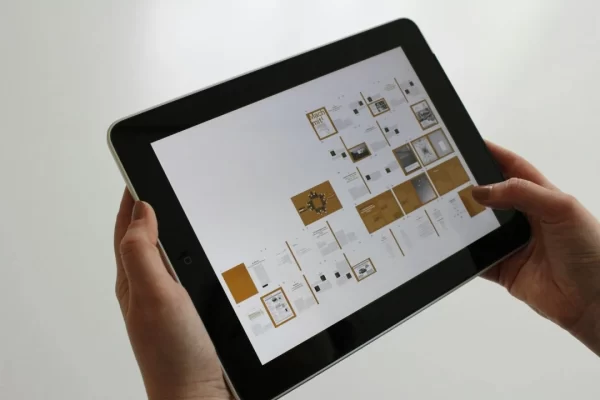Emerging trends regarding the future of web design and development aim to make websites more attractive and useful for users. Gone are the days where you had to wait half a minute for websites to load. Today, the web has quick answers for everything.
Current development trends have made the web faster and more efficient. Here are 10 ways websites will be revolutionised in the future:
- Single-Page Web Applications
Single-page web applications (SPAs) perform better as compared to websites with links leading to multiple pages. Current examples of SPAs include Facebook, Gmail, Google Drive and Google Maps.
They operate faster and have proven to engage users’ attention for a longer time period. They provide instant feedback as compared to conventional websites which take time for new pages to load.
Single-page websites are also mobile-friendly. They allow users to simply scroll vertically to find the information they require.
- Artificial Intelligence
Artificial intelligence is the future of web design and development as technology is replacing humans in various roles. Smart Home, home cleaning robots and autopilot are all examples of artificial intelligence.
Many companies have replaced human customer services representatives with live chatbots. These bots are equipped with problem-solving algorithms and detailed consumer behaviour analytics. Chatbots optimise user experience and reduce the costs of employing humans for the job.
- Voice Commands
Initially, this technology was expensive and not very effective. Today its capacity has grown multi fold, with functions such as voice enabling, voice search optimisation and voice commerce.
Voice commands are used by popular smart home assistants such as Siri, Google Home and Alexa. Many web applications and websites are embedding voice search to improve user experience.
Voice search is a hassle-free way to use technology as it eliminates the need to type. It enhances client engagement to provide quick access to website information, which eventually increases conversion rates and sales.
- Interactivity/Virtual Reality
Users tend to engage more with websites that offer them room to interact. Increasing interactivity is an effective way for your website to stand out from the competition.
For example, a company that deals in cars can help the user explore a particular model with a simple mouse click. An interactive car website can enable the user to select a colour, decide the equipment and choose the wheels to check out the look.
Increased interaction will help customers personalise the items they buy. This gives them the feeling of ‘owning’ an item before actually buying it.
Custom features used to take a long time to load in the past, making them complex for websites. However, improved technology has made them easily adaptable for websites.
- Internet of Things
Internet of Things (IoT) is a technology that allows the storage and collection of data of physical objects on the web. These interconnected devices are able to produce useful results without much command from the user’s end.
IoT was developed to simplify and facilitate daily life for humans. Web developers will not directly work on IoT, but they will be developing apps required for analysis and data for their functioning. Some common examples of IoT in practice include payment automation, smart city technology and e-health.
Transport, housekeeping, healthcare and marketing fields are likely to experience a rising involvement of IoT. Special devices have been developed to monitor sleep cycles and compile nutrition plans. Advanced models are also capable of using biometric data to diagnose a user’s health and detect illnesses.
- Self-Creating Websites
Softwares such as WordPress and DreamWeaver have made it easier to create websites. New content management systems continue to be developed to help retailers create a web store without having an understanding of code.
This development will soon decrease the role played by front-end developers. This would make it difficult for front-end developers to find jobs in the future, but on the brighter side, competition would bring best practices to the surface.
It is predicted that front-end development would soon die down and businesses would be able to create almost entire websites without assistance. In the 2030s, special website stores may emerge that sell ready-made platforms.
- Motion UI
Think of an animated user interface as the progress bar showing file download. Motion design helps make interfaces more animated and appealing. It can add value to your brand and enhance user interaction.
A significant benefit of motion UI is that it adds interesting elements to make user experience simpler and engaging. A website is the front face of a business in the digital age. Good animated graphics have the advantage of grabbing users’ attention, communicating progress updates, making designs look more personal and inducing a sense of accomplishment.
- Serverless Applications and Architecture
Future may introduce serverless technology to web development. This has the potential to prevent system overloading, loss of data and costly development.
The concept of serverless technology ushers in the possibility of replacing regular servers with clouds that handle machine resource consumption. Emerging trends in serverless app architecture aim to decrease development and support budgets, boost apps with potential for flexibility and maintain a sustainable internet environment.
Forecasts suggest an increasing role of serverless technology for IoT, chatbots, products that require complex backend work, and Application Programming Interface (API). Serverless technology is likely to execute tasks such as downloading file backups, objects export and notification delivery.
- Responsive Design
Visitors tend to abandon websites that do not display properly on their devices. Websites in the future will increasingly be optimised to work efficiently on a variety of devices, such as laptops, smartphones and tablets.
Website responsiveness is a growing area of focus for web developers as mobile phones are becoming the most common device for people to browse the internet. However, other devices must not be sidelined and a holistic approach is required.
- Improved Loading Speed
Web users usually expect websites to load within 2-3 seconds. Some websites nowadays are still adhering to the 8-second rule.
Research suggests that loading speed needs to be further optimised as people are increasingly using mobile phones to access the internet. They do not like to wait for long and in case of a slow-loading website they are likely to go back and select another website.
This trend is bound to push developers to create faster websites. This will result in designs that load quickly yet prove to be engaging.
Web users these days prioritise faster speed, ease of access, and interactive websites. The future of web design and development will ultimately focus on enhancing these aspects.



